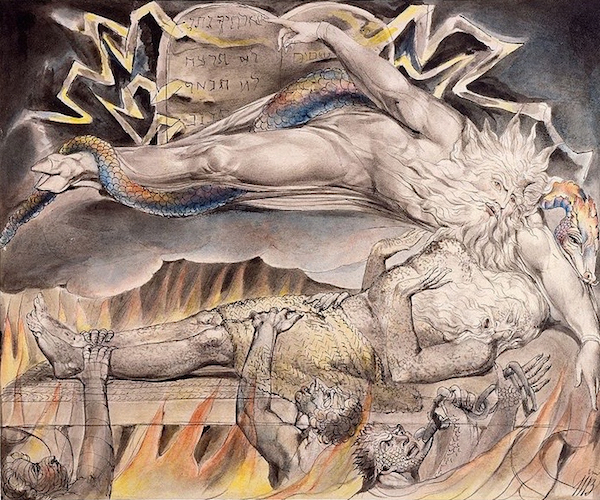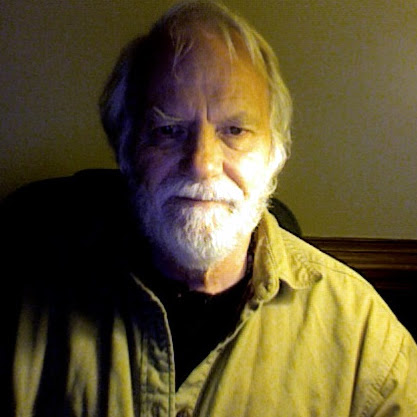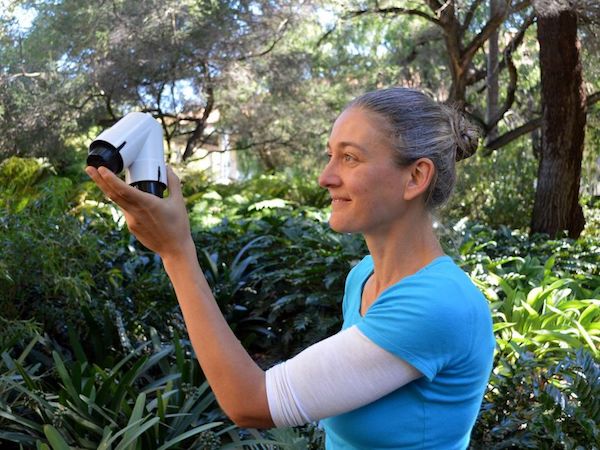What Does It Mean to be Alive?
“We don’t understand this virus from the inside out. We don’t even know in what sense it is ‘alive.’ It seems not to have any means or purpose other than simply to continue. This reminds us of the story of the Welsh cauldron, into which dead soldiers could be tossed, where they would seethe and boil in the broth and come back out fully recovered. But not really alive. Are there degrees of aliveness? I ask you to pause here and contemplate the current list of leaders among the world’s nations.”—Anita Sullivan
On the Other Hand
By Anita Sullivan

EUGENE Oregon—(Weekly Hubris)—1 June 2020—Buried inside the COVID-19 pandemic there is a powerful and familiar conflict of fundamental needs. The need for life, the need for death. The need for clarity, the need for someone to blame, the need for justice. The need to protect those most vulnerable and the need to preserve the health and sanity of those less vulnerable. Life-wish/Death-wish; Darkness/Light.
All of these needs, in constant flux, morph into and out of becoming commitments to or violations of the right to lead a normal, decent life—a life with form and meaning.
We may feel right now a kinship with Job when he speaks at the very end of the ancient Hebrew poem, replying to God (Yahweh) who has just finished mowing him down with a magnificent recital of His powers and accomplishments. Job says, basically, “I spoke out of turn, I did not know. But now that I am able to see you, I do know this: that repenting in dust and ashes is not the proper response.” [The words inside quotations in the following, final stanza of the poem, are Job’s references to previous statements by God]
Job answered Yahweh thus:
I know that you can do everything,
no plan is inaccessible to you.
“Who is this who obscures counsel ignorantly?”
Therefore I told, and didn’t understand
wonders beyond me, and I didn’t know.
“Hear, and I will speak,
I will ask you questions, and you instruct me.”
With ears’ hearing I hear you,
and now my eye sees you.
Therefore I despise and repent
of dust and ashes.
from In Turns of Tempest: A Reading of Job, by Edwin M. Good
I invite you to briefly consider with me the corona virus in a context that stretches beyond Earth’s ionosphere, into the area of space buffeted by the solar winds—into that realm of myth and story that continues to offer some structure to the perpetual human mystery: Who are we, and what is our purpose?

“We start with the most basic practice—entering into the field of silence.
In silence, we perceive individual things surrounded by fringes of a great quiet. Objects are as if filigreed. Silence wraps around them like lace . . . . Things—such as buildings, bridges, furniture, and so on—do not typically share their silence. They seem to sit in it rather passively rather than glow in it as the things of nature do.
“We also hear, smell, and taste the silence . . . . Such sensory experience is not imaginary. We are not experiencing something that is not there, but rather are taken into a different level of what is there. The sense-perceptible world is raised to the level of the imaginal for us the moment we cross the threshold of the noisy world into silence. . . . When we are able to dwell for a time in silence, we perceive something of the soul of the world.”
Robert Sardello, Facing the World with Soul
How seriously do we need to take this latest pandemic? It is an infectious disease that kills people at a higher rate than its cousin “the flu,” and like most flus when they first show up, has no prevention (vaccine) and no cure other than hospital care without a designated drug regimen. At the moment we, its human victims, are relying almost totally on a kind of “place holder” support—masks and social distancing—to keep the pandemic from escalating into a geometric progression, our worst nightmare. To assuage this possibility we have agreed to plunge the planet into a state of financial ruin.
We don’t understand this virus from the inside out. We don’t even know in what sense it is “alive.” It seems not to have any means or purpose other than simply to continue. This reminds us of the story of the Welsh cauldron, into which dead soldiers could be tossed, where they would seethe and boil in the broth and come back out fully recovered. But not really alive. Are there degrees of aliveness?
I ask you to pause here and contemplate the current list of leaders among the world’s nations.
Maybe it would be a good idea to check—each of us individually and in secret—our own “aliveness” quotient. Here is a basic exercise offered by Spanish poet Gemma Gorga, to help answer the question “How alive am I?”
“With the palms of my hands I explore the base of my soul. Cold and flat as a headstone in the darkest wing of the church, it bears an inscription in relief. I pass my fingers over it again and again, until I can read it. And so, thanks to the sense of touch, I discover who I am.”
from Book of Minutes (#52)

Even some of the dead may be more alive than living humans:
“It’s a landscape where you can feel time . . . . It’s a pleasant place and it’s quiet in the tombs. The burial ground’s atmosphere is addictive. This could be because in Egypt the dead aren’t all that dead; they live here in a sort of mysterious community with animals and gods, and sometimes they want to chatter . . . . Participants in archaeological expeditions clean and restore the half-demolished tombs and gradually gain the shadows’ trust. The shadows approach them from time to time and, from the shadowy depths of the underworld, they touch the stripped wires of the collective mind.”
Vάclav Cílek, (writing from “the largest burial ground in the world,” in the Nile Valley), To Breathe with Birds
Mythology offers an ongoing picture of the collective mind of our species, a picture we hold inside ourselves consciously or unconsciously as a kind of continuously changing answer to the Who Am I question. But no matter which national epic, holy book, or set of ancient stories you take as your go-to reference, there are certain issues that do keep recurring when it comes to being human. One of the big ones is that we come into the world as innately flawed beings. In the Christian myth we were genetically wounded by Adam and Eve’s act of original disobedience, and this wound was passed down as a kind of curse through many generations before Christ arrived to erase that shadow from our balance sheet.
Myths as explanations for human nature all have huge holes in them (as do all myths, because of the essentially wordless nature of the sacred mysteries they uphold, protect, and embody). But most myths about our origin and nature do nail us as somewhat bumbling figures who behave as though we don’t quite fit in this world. Are we an integral and necessary part of nature, or are we exceptional dwellers on the planet, uncertain (like Job) of what is it exactly that we know?
This question is the subject of Rainer Maria Rilke’s magnificent ten-part poem The Duino Elegies, which begins with a human cry to the dark and silent heavens:
Who, if I cried out, would hear me among those angelic orders?
And later, in the First Elegy:
It’s true, it’s strange not living on earth
anymore, not using customs you hardly learned,
not giving the meaning of a human future
to roses and other things that promise so much . . . .
But the living are wrong
to make distinctions that are too absolute.
Angels (they say) often can’t tell whether
they move among the living or the dead.

Again, asking what it means to be alive. “The living are wrong to make distinctions that are too absolute.” How do we react to tiny beings who need our bodies for their continued sustenance, and yet do not show this need in any way except as a will to destroy? Living may not be simply a condition that automatically comes as part our birthright. Rather, it may be a set of actions—rituals even—that we must consciously take part in with focused reverence, in order to fully participate as members of the dear earthly paradise we have so poorly understood.
Here, from a recent book by an associate professor of evolutionary ecology, is a contemporary scientist speaking like a poet, as she recounts in mythological terms the outcome of painstaking experiments she conducted with colleagues on the possible ways that plants signify their own consciousness of being alive. I have condensed it to save time and space, but would recommend reading it in full.
“We believe we see only because of the presence of light, but it is in the dark that light becomes visible. From the encounter of light and darkness we are born, and with us, the world emerges. Constantly molding the world around us with our gaze, we in turn are molded by the gaze the world presses upon us . . . . Rarely do we realize that by virtue of its being all around us, the penetrating gaze of the world sees us, at all times and from all sides . . . . It is in this liminal space of pure possibility, where the being-made meets the coming-undone, where light encounters darkness, that we, too, are conceived. It is here that we wait, not knowing, to encounter the other, to become the other, and . . . it is here that we, humans, become them, plants.”
Monica Gagliano, Thus Spoke the Plant: A Remarkable Journey of Groundbreaking Scientific Discoveries and Personal Encounters with Plants
![]()
To order Anita Sullivan’s books, The Rhythm Of It and/or And if the Dead Do Dream, click on the book covers below.



